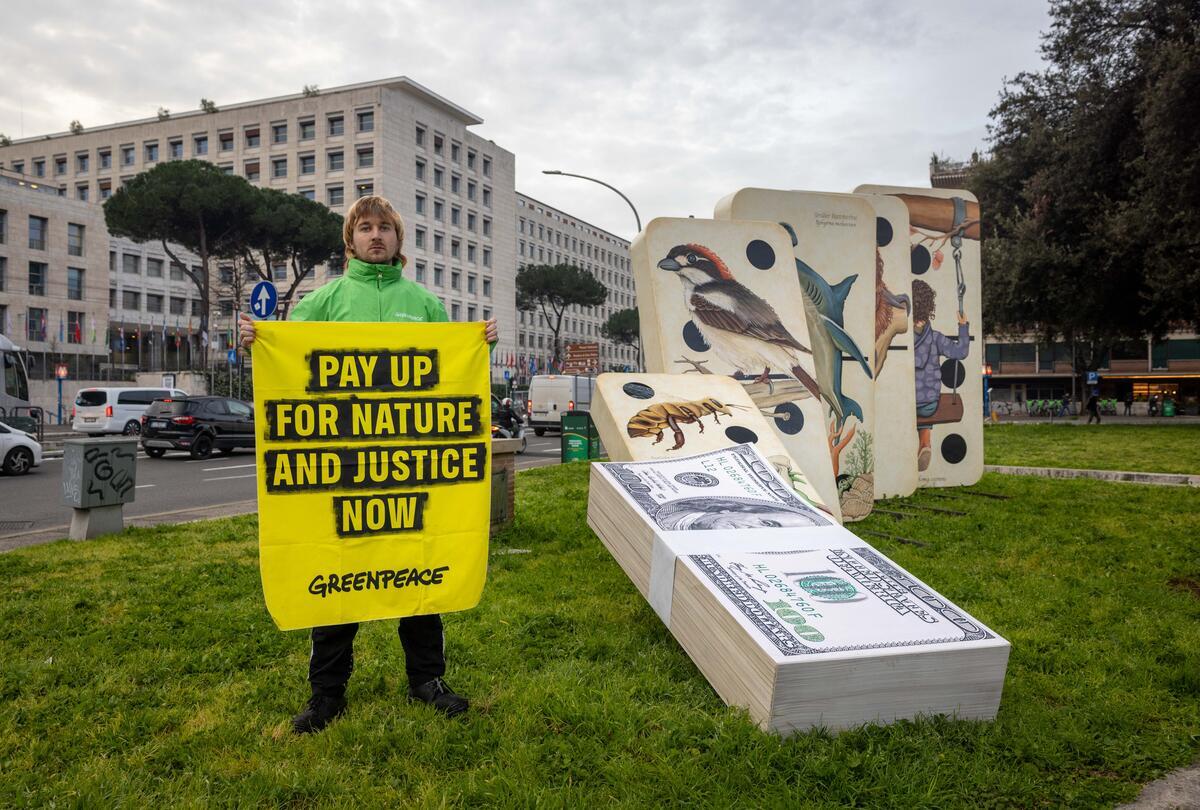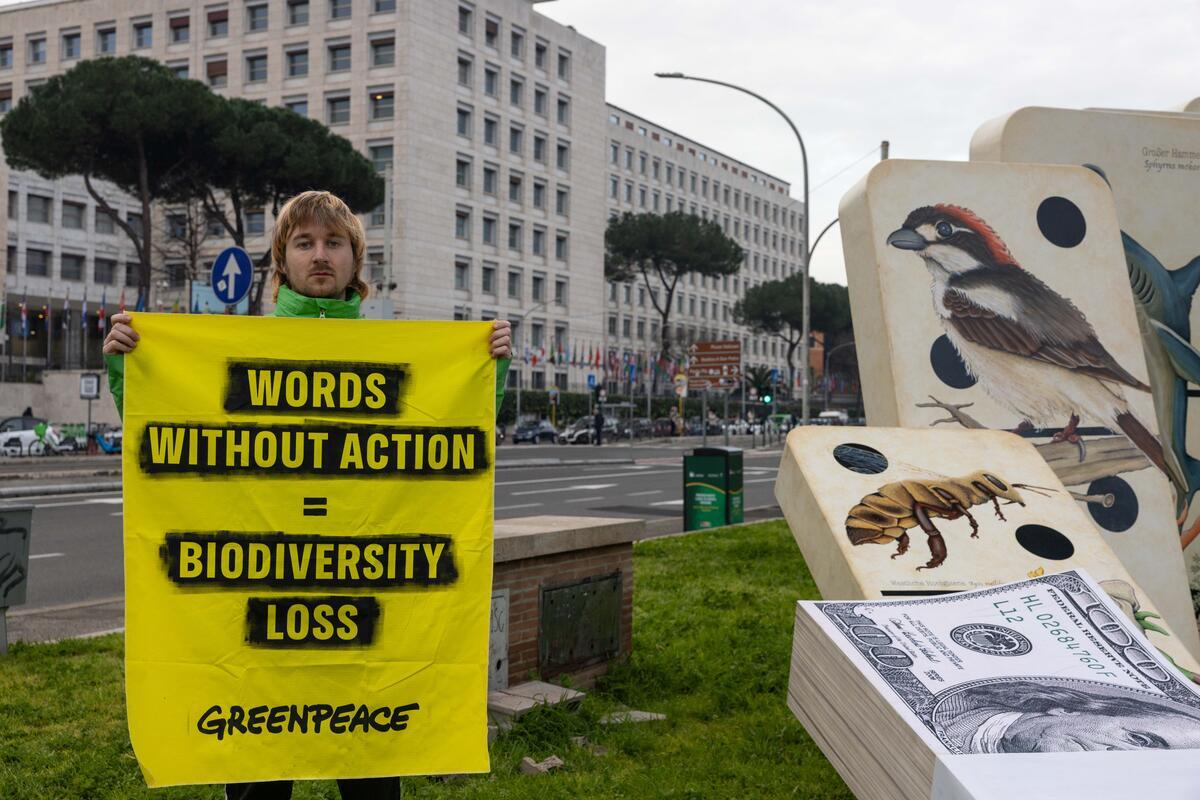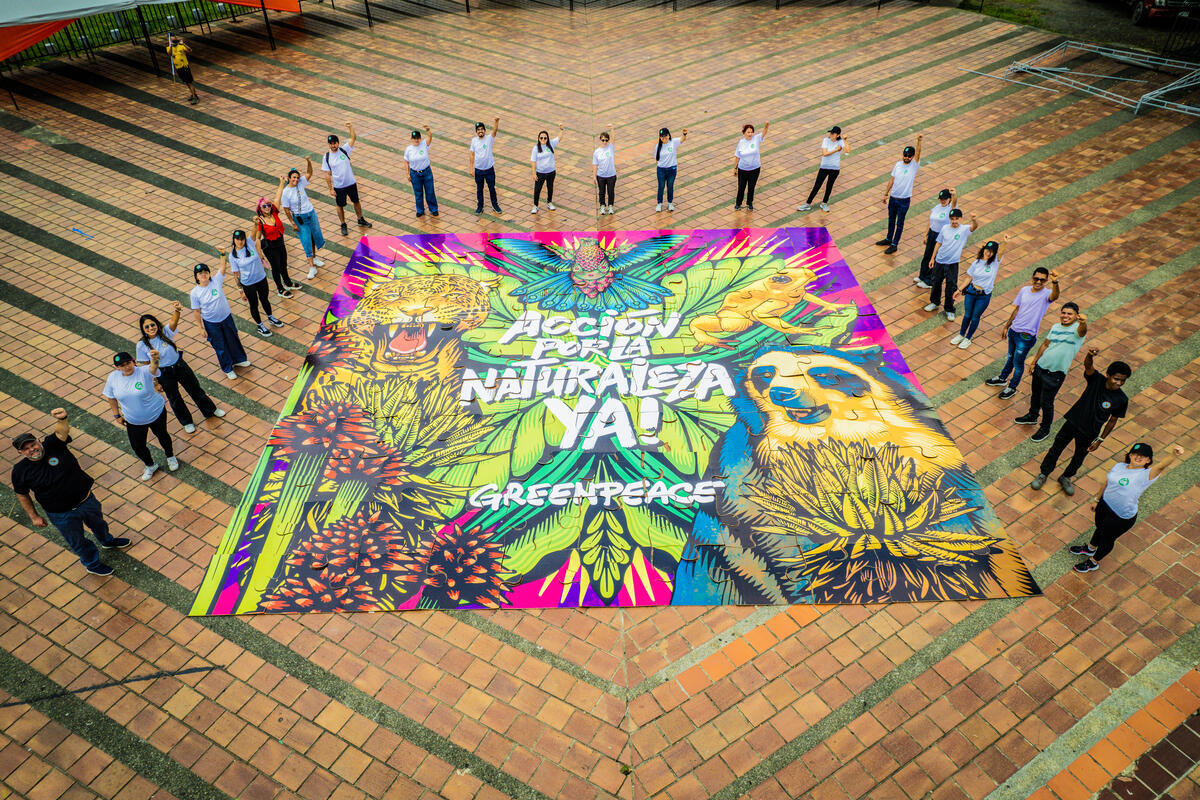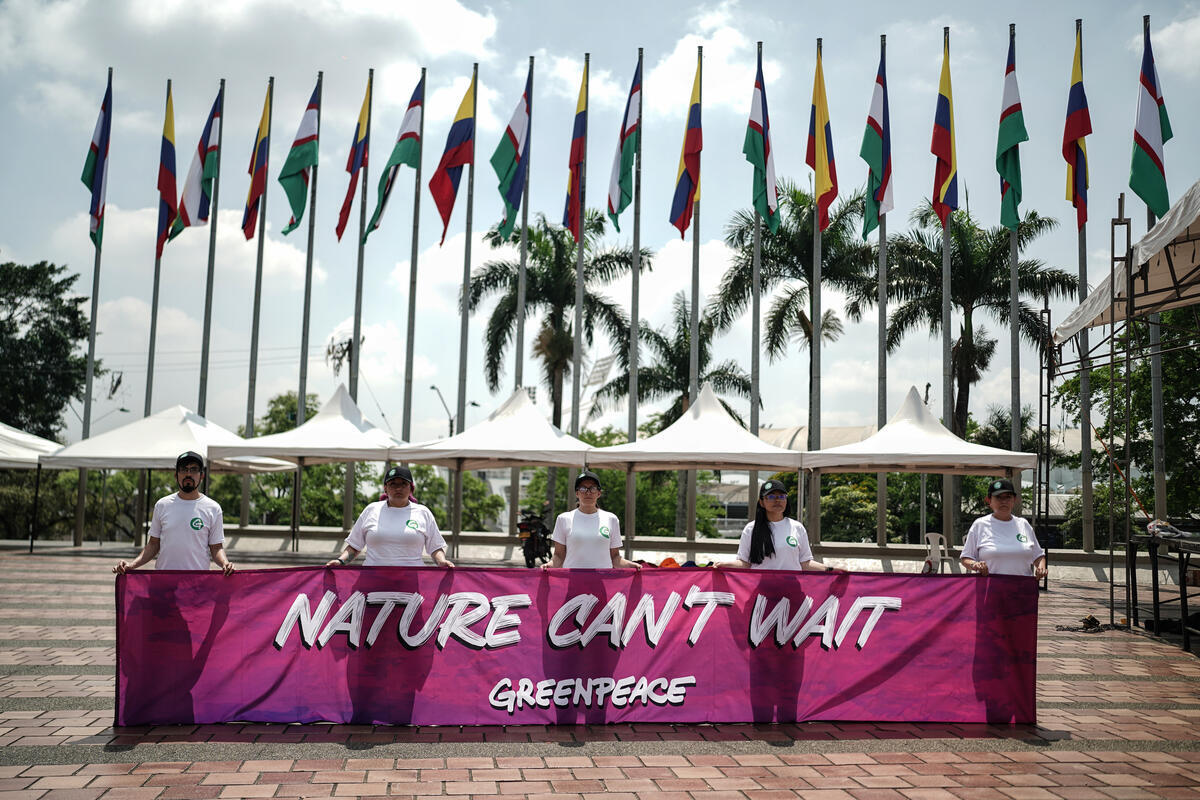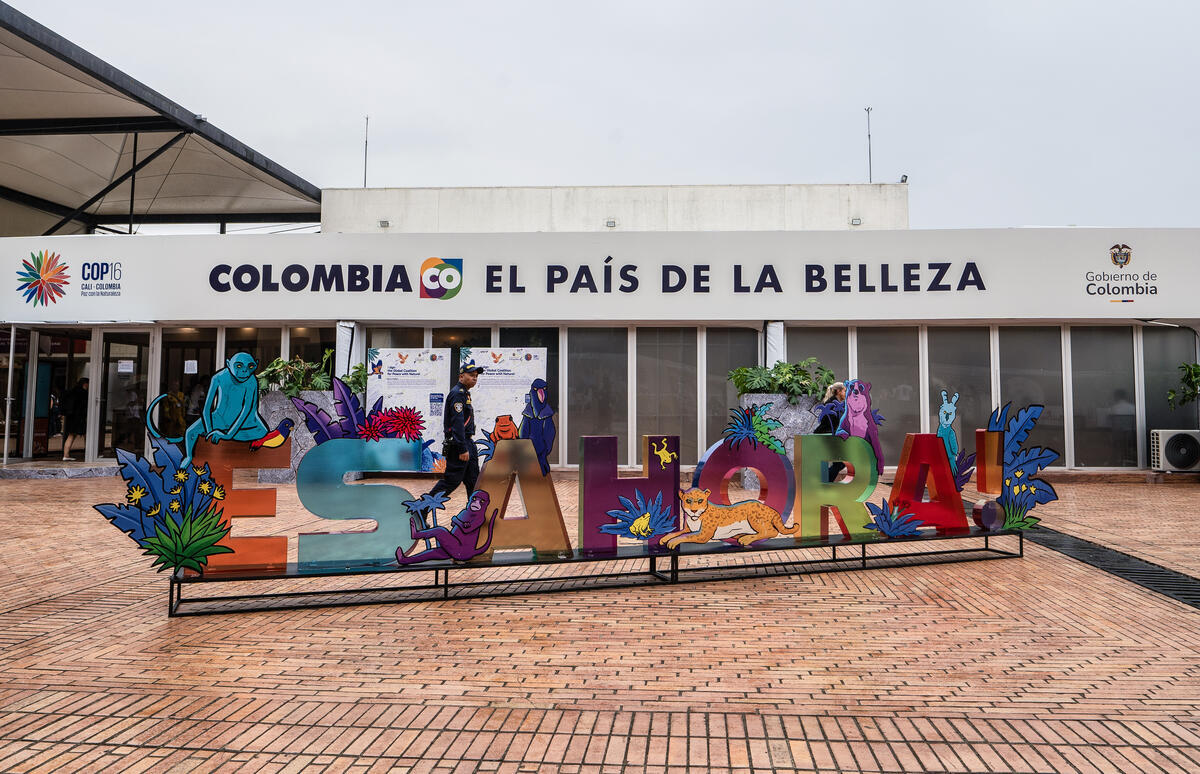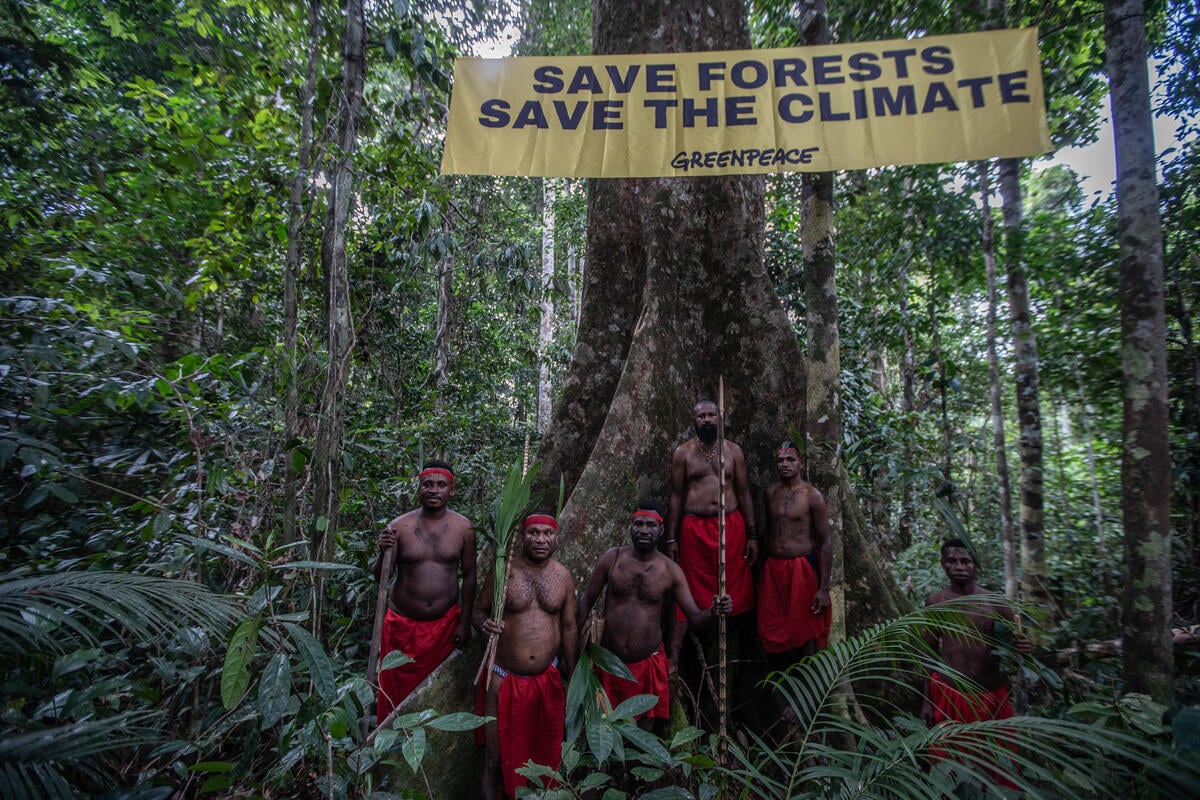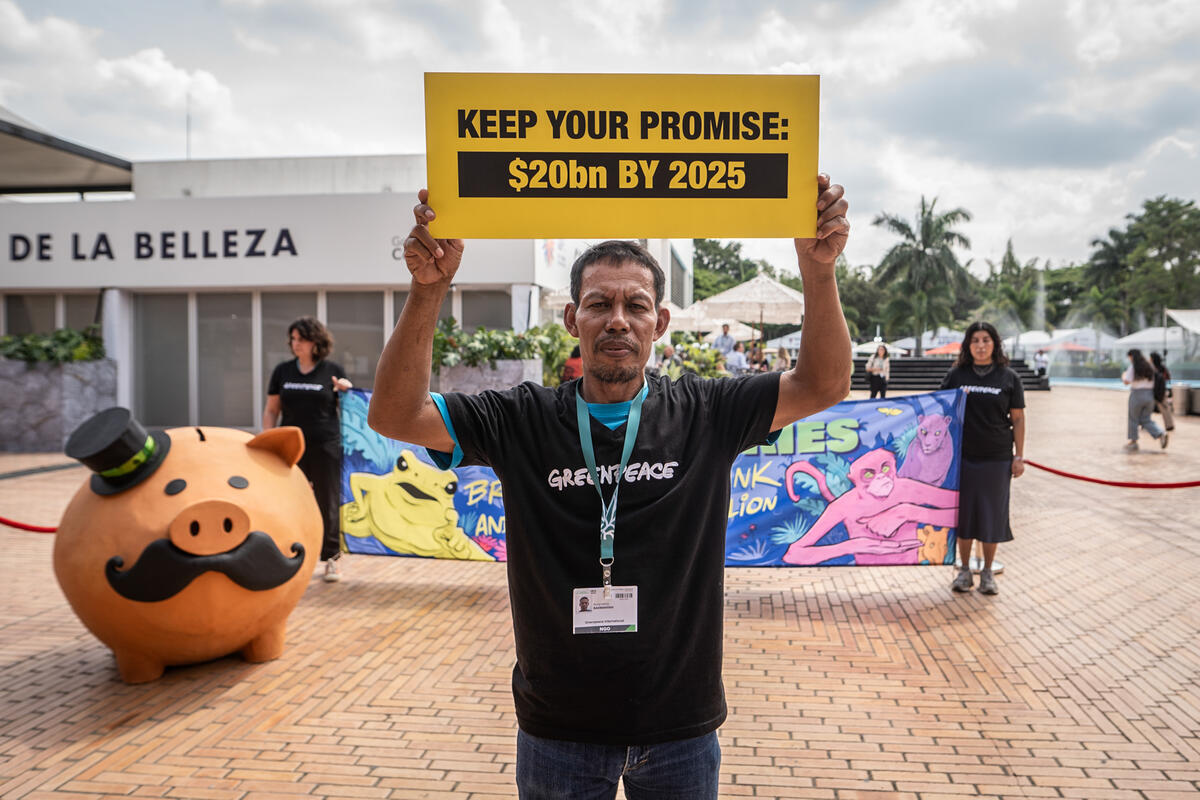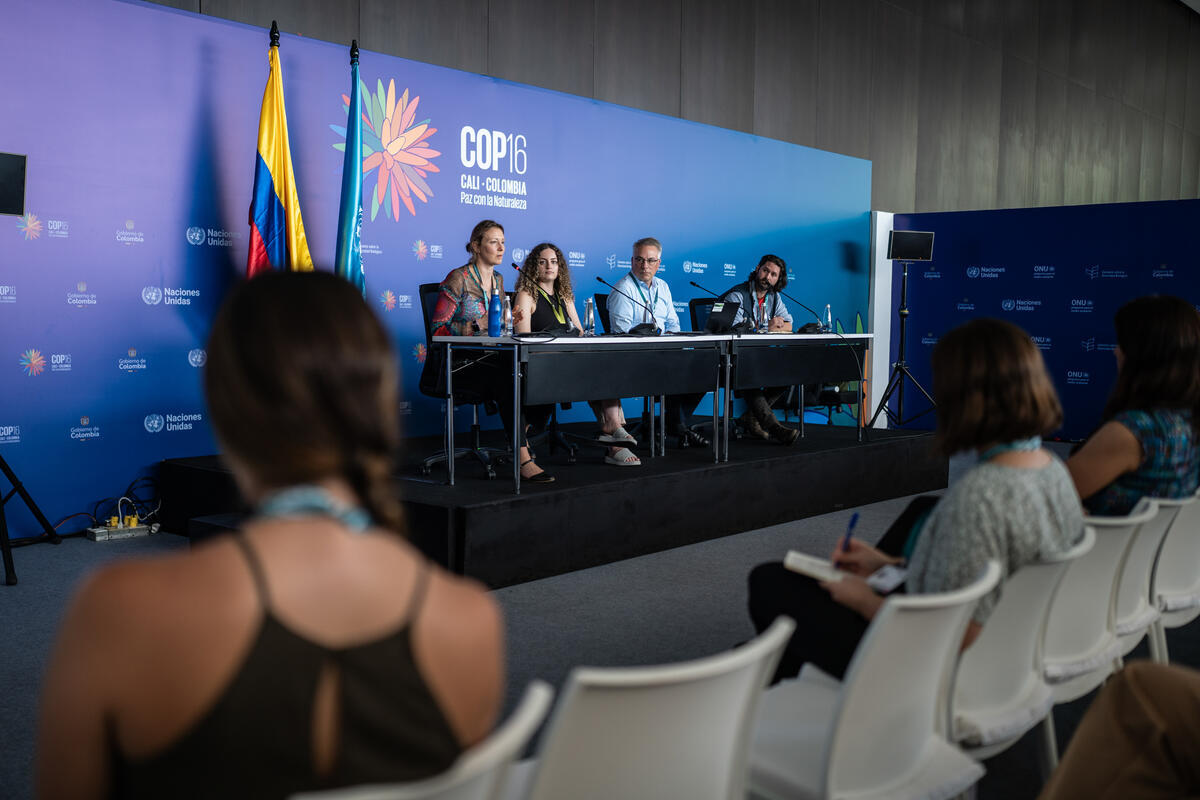All articles
-
UN Biodiversity COP16 launches committless Cali Fund and finalises agreement on biodiversity finance
CBD COP16 talks end in Rome with small step towards nature protection, Greenpeace comment
-
UN Biodiversity COP16 reconvenes to finalise nature finance, deliver new protections ahead of COP17
Governments will come together for Biodiversity talks to finalise an agreement on the mobilisation of finance for nature, Greenpeace expectations
-
COP16: Greenpeace unveils message outside UN venue – Pay Up for Biodiversity Finance
Leaders must stop the fall and put real money on the table—without urgent and adequate finance, promises mean nothing.
-
COP16: successes and challenges for nature protection
The 16th UN Biodiversity talks have reached final agreement. But what does that mean for nature protection?
-
UN biodiversity COP16 delivers new protections but fumbles nature finance, sends call for action to COP29
Greenpeace on UN Biodiversity COP16 outcome
-
COP16: Greenpeace unveils message inside UN venue – Time to Act for Biodiversity ‘It’s Now’
Greenpeace sent a final message on the urgency of taking decisive action to protect our planet’s biodiversity.
-
Crack open the piggy bank! Greenpeace delivers piggy bank at COP16, calling on countries to keep nature protection payment promises
Greenpeace activists delivered a 1.2 metre tall piggy bank to the central square of the COP16 venue, where governments resume a second week of UN biodiversity talks
-
COP16 gridlock over money drags into week two of UN biodiversity talks, with all eyes on wealthy Global North countries
As COP16 resumes talks for a second week, rich countries will be faced with answering for a week of inaction.
-
Nature does not wait: Greenpeace deploys giant puzzle in message to COP16 delegates
Greenpeace Andino activists and volunteers put together a giant puzzle in Cali to send a message to UN Biodiversity COP16 delegates.

